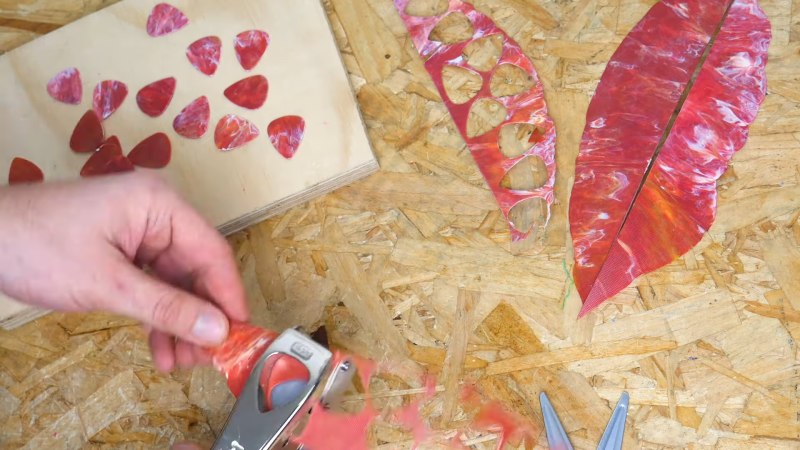Plastic recycling is something that many of us strive to accomplish, but we often get caught up in the many hurdles along the way. [Brothers Make] are experienced in the world of plastic recycling and graced us with a look into a simple and reliable way to get consistent thin sheets of durable plastic. Using a common T-shirt press and a mixture of plastic scraps, you can get the process down quickly.
Summarizing the process is pretty easy due to its simplicity. You take a T-shirt press, put some Teflon baking sheets on both sides of some plastic scraps, and then press. Repeating this a couple of times with different colored plastic will get you a nice looking sheet of usable sheets for any purpose you could dream of. Thicker pieces can have some life changing applications, or as simple as guitar picks, as shown by [Brothers Make].
Make sure to try out this technique yourself if you have access to a press! Overuse of plastic is a widely known issue, and yet it feels like almost no one attempts to solve it. If you want a different kind of application, try making your own 3D printing filament out of recycled plastic!
Thanks to [George Graves] for the tip!
















Clever!
Clever way of creating microplastics. Most of the “hand made” recycled plastics are not uniformly melted and mixed, thus creating “better” conditions for the plastic to crumble.
Yes, I really get concerned microplastics when I see home shops or makerspaces without regard to fine particles. I have a bank of enclosed printers with HEPA filters, and if I run enough hours of PETG or ASA I get a fine, smaller than dist, film of particles on the inside of the enclosures.
Whenever there is sawing, cutting, punching, melting, or machining, there are most microplasitcs being formed, and a non-uniform batch just speeds up that breakdown.
It’s not so bad if it’s virgin PLA, where it’s going to be digestible by various human body systems. But other plastics are just going to pool in your brain and liver and hang out there.
The quantity produced by hobbyists is not the issue.
“Better” maybe, but you would have to do a really really insanely poor job for it to be “better” enough to make a blind bit of difference at least compared to that brand new shirt with man made fibres. As that really is actually good conditions for shedding lots and lots of micro plastics! Where your mix and melt not quite uniform might perhaps break because you didn’t do it well enough along the joins between the bits, but that is still very much MACRO plastic waste being generated.
If it’s a solid enough sheet, you could presumably vacuform …
If it’s stiff enough, it can also be used as spudger to pry apart things like your laptop
I read about this in The Big Book of Maker Skills by Chris Hughes. Great general-knowledge maker/hacker book btw.
Another cool trick: take plastic bags from shopping and do this on a larger scale and you have a cheap tarp. Can’t be any worse than Harbor Freight. Zing!
I’ve made decorative* diffusers by layering bubble wrap and heat-pressing. It looks pretty decent and there’s a lot of games to play with the layering and adding other materials (eg leaves; that turned out very nice).
For generally-small values of “decorative”